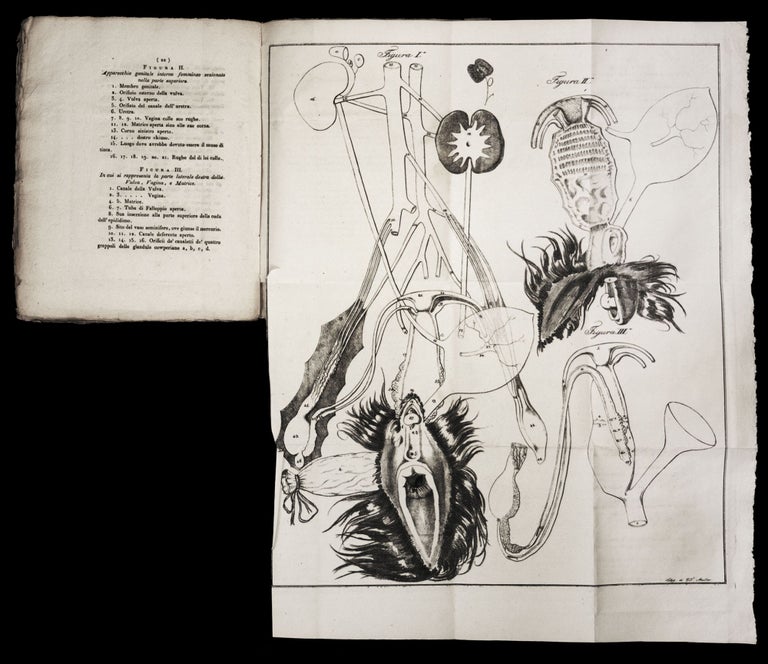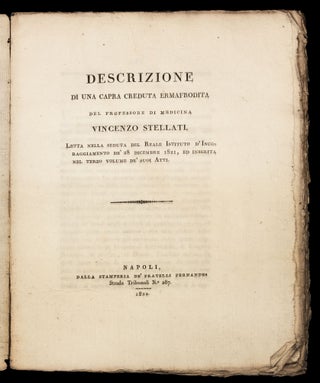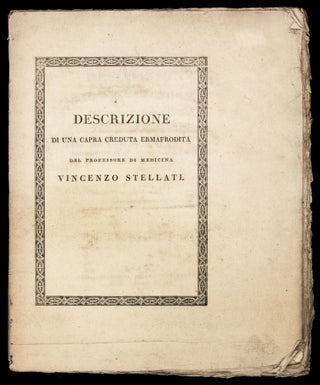Descrizione di una Capra creduta Ermafrodita.
Large 4to [22.5 x 27 cm]. 28 pp, plus 1 large [40.5 x 47.5 cm to platemark] folding engraved plate. Bound in original printed wrappers with woodcut borders, entirely untrimmed. Some light dustsoiling to wrappers and waterstaining to final 3 leaves, otherwise a very genuine copy, clean and fresh. Extremely rare offprint of this study of hermaphroditism in a higher animal (a goat) – viewed very much as an abomination of nature. The work is illustrated with a large lithographed plate depicting both the external and internal anatomy of the hermaphrodite. Citing earlier work on hermaphroditism in Aldrovandi, Bauhin, Moller, etc., Stellati acknowledges that while the condition is well recognized in the vegetable kingdom and in the lower orders of animals, Nature has mandated that it does not and cannot exist in higher orders, or the immutability of the species would be threatened. The goat is thus an example of a most horrible abomination of nature, and a worthy subject of study. Stellati begins with a general description of the specimen – a healthy and vigorous 12 month old goat, but soon turns to the arrangement and anatomy of the goat’s genitalia – in particular the distribution of the genitor-urinary tract between the female and male parts. The large folding plate illustrates these features, and is accompanied by a printed legend detailing some 92 different anatomical features. At the end of his treatise the author seems unable to resist pointing out the excruciating agony and irony of the hermaphroditic state, even going so far as to compare it to the tribulations of Tantalus. Despite the proximity of two complementary sets of genitalia, the animal will never be able to satisfy itself, much like Tantalus’s inability to slake his thirst with water which remained just out of reach.
Stellati’s work impressed the review committee of the Royal Society of Naples (the ‘Royal Institute for the Encouragement of Natural Sciences’) and duly appeared in Vol. 3 of their Atti (1822). The present work is a separately published offprint, with an added title page and wrappers, and the page numbers reset.
Sold



